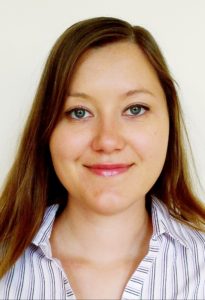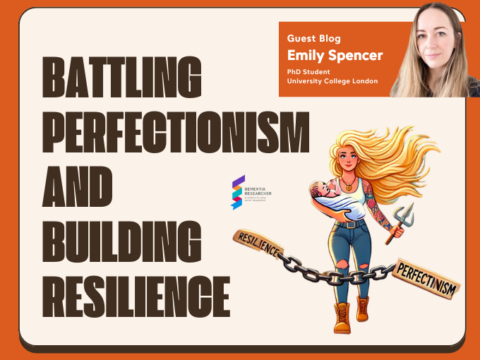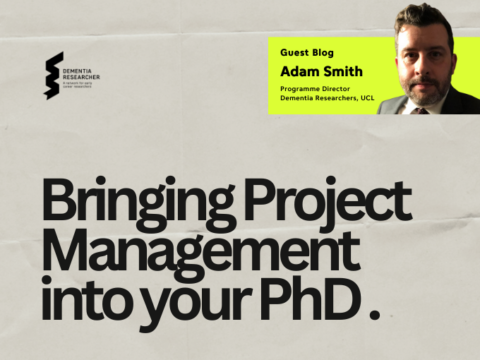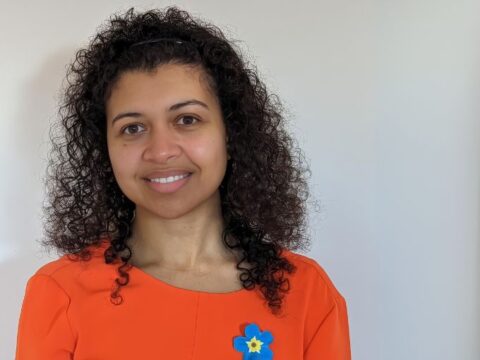This is the third of four guest blogs from Early Career Researchers who observed the recent ARUK Grant Review Board – Take Three by Dr Barbara Kramarz
A unique valuable opportunity to gain ‘insider knowledge’ – Impressions from observing Alzheimer’s Research UK Grant Review Board Meeting
Last week I was one of the privileged early career dementia researchers who were invited to observe the Alzheimer’s Research UK (ARUK) grant review board proceedings. Throughout the day we had the opportunity to learn about key aspects of grant applications that determine whether the board is likely to vote for or against funding a specific research project, and we also had some time for discussions during breaks.
Before I describe my impressions in detail, I firstly wish to emphasise that the day spent with the board was a very educational experience and I would certainly recommend this opportunity to other researchers. I would also encourage other funding bodies to consider providing similar opportunities.
What was the day like?
The grant review board day began promptly on time and it was scheduled very tightly with just 8 minutes being allocated per grant application. Prior to the board meeting each of the grant applications would have been peer-reviewed by external reviewers. Then 2 or 3 members of the board would have been requested to familiarise themselves with one specific application and the peer-reviews in detail, so that they could then present the information to the board during the meeting. There were about 20 members of the board present.
Within approximately the first half of the 8-minute timeslot allocated per grant application one board member would summarise the application, and the other board member(s) that had read it fully would then contribute additional comments. The board would discuss the proposed research within the remaining time of the allocated 8 minutes before voting on how to score it.
The 1-to-5 scoring system
In order to decide whether an application for a grant should be successful, or, in case of fellowships, whether the applicant should be invited for an interview, the board uses a scoring system from 1 to 5. The score of 1 means that the board was in favour of the application, whereas an application that scores close to 5 would not be funded. Applications that score around 2.5 are borderline, and in such instances, it is possible that the board might suggest specific changes and request a resubmission.
Fine balancing of the major project grant applications
Most of the grant applications discussed and evaluated throughout the day were for major research projects. The main challenge with these types of grants, which very quickly became apparent to us – the observers – was maintaining the right balance between technical aspects and potential applicability of the work to help to treat dementia. On the one hand, it was crucial to provide enough experimental detail to convince the board that the project was carefully planned, and so its execution would go smoothly. On the other hand, it was essential to demonstrate the relevance of the research in disease context.
The suitability of proposed research methods
In terms of experimental detail, the board paid close attention to reliability of resources, e.g. antibody specificity, and optimisation and/or validation plans. We also learnt that it is important to ensure that experimental objectives remain independent of each other whenever possible; a grant application is less likely to be successful, if achieving one project goal is possible, only if a previous goal has already been fulfilled. Hence, it is always an advantage to have a ‘plan B’ in place.
The suitability of experimental systems was also carefully considered, and there appeared to be a general consensus among the board that ideally experimental hypotheses should always be tested in more than one system; for instance, in cultured cells as well as in animal model(s), rather than just one, or the other. Yet, there were exceptions: the most important aspect was that an experimental model was well suited to answer a specific research question.
Clinical studies and treatment target identification
Key issues that the board discussed in context of clinical studies were whether a large enough number of subjects would participate in order for the study to be sufficiently statistically powerful, and whether such studies were headed by both a clinician as well as an expert in statistics and data analysis.
Also, in cases of studies that aimed to treat specific disease-relevant targets, it is crucial, as we – the observers – repeatedly heard, that specific phenotypes must firstly have been thoroughly described. This is essential in order to limit the unknown factors, or variables, in the study; there must be a clearly defined baseline against which treatment target manipulation can be measured.
No results – no more money!
A number of grant applications, evaluated by the board, had been submitted by researchers who had previously been funded by ARUK. A fundamental question, which the board members asked before scoring the application, was whether the previously awarded ARUK grant yielded expected results. A subsequent project is less likely to get funded before outcomes of the previous one had been published, or at least submitted for publication. Nonetheless, the timescale(s) of the previous project(s) and the proposed scientific endpoints were obviously considered by the board, and this was not a decisive factor, if the previous grants funded shorted projects, only a few months long.
Luxury vs. necessity
The theme of ‘luxury vs. necessity’ occurred most frequently during evaluation of equipment grants. In order to resolve this issue, the board would look for evidence of applicability of a certain piece of equipment for, firstly, more than one research project, and, secondly, by more than one research group. An equipment grant was much more likely to be funded, if it were to be shared within, or even between departments. Furthermore, the board would also look for evidence of whether costing for training to use the new piece of equipment and/or preparing a suitable facility have been considered and included in the application.
The board also asked the question of whether it is justifiable to request funding for more than one post-doctoral researcher in case of certain major project grants, or whether perhaps it would be more appropriate and more cost-effective to request funding for a research technician. When secondment/sabbatical grants were evaluated, a crucial question being asked was whether the secondment opportunity would benefit not only the recipient, but also the dementia research field. This was evaluated based on the applicants’ publication records, as well as relevance of the secondment grant application to the dementia research field.
Formatting
Last but not least, the board members also emphasised that fragments of text in the grant application, which an applicant wants emphasise should be typed in bold or be highlighted in some other way. Similarly, clear headings also make the reviewers’ and board members’ jobs significantly easier. And finally, it is crucial to the word limit is not exceeded.
Final thoughts
Overall, having had the opportunity to observe the grant review board proceedings, I now have a much clearer idea of what will ultimately be the determining factors in whether a grant application is successful or not. Being able to draft grant applications with these aspects in mind is a great advantage, especially being aware of how little time the board has per application. It was a great privilege to have been offered this opportunity, and I would strongly encourage other researchers to apply, and other funding bodies to consider opening up their grant review board proceedings to interested audiences.
Author
Dr Barbara Kramarz works as a Gene Ontology Biocurator in the UCL Functional Gene Annotation Team. Barbara is currently focusing on the curation of knowledge about cellular processes impaired in dementia. In her spare time she contributes to BioNews, an email newsletter focusing on genetics and medical updates for specialist as well as non-expert audiences. https://www.bionews.org.uk/barbaraczub/
 Thank you to Alzheimer’s Research UK for providing the opportunity. To find out more about potential funding from ARUK visit their website.
Thank you to Alzheimer’s Research UK for providing the opportunity. To find out more about potential funding from ARUK visit their website.

 Print This Post
Print This Post





